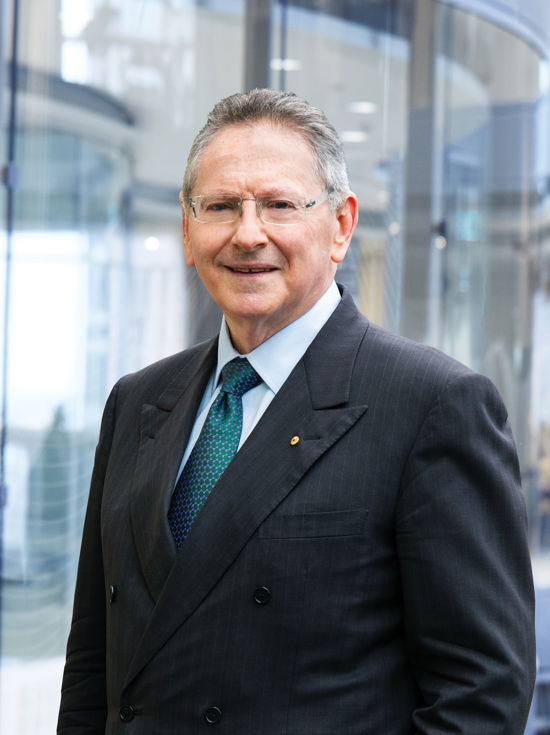From our Chair

Steven Skala AO

I am pleased to commend the 2019–20 Annual Report of the Clean Energy Finance Corporation.
Since inception, sound financial management has been a hallmark of CEFC operations, driven by the acknowledgement that it invests on behalf of Australian taxpayers, with a responsibility to meet agreed policy objectives and deliver a positive financial return. In 2019–20, challenging economic conditions highlighted the importance of this commitment to prudent investment.
The CEFC was established to catalyse private investment in Australia’s clean energy sector and its financial performance this year signals that meeting this objective has gathered momentum.
In 2019–20 every CEFC dollar invested was matched by more than $3 in investment from private sector capital. Since inception, every $1 of CEFC finance has been matched by more than $2.30 from the private sector. These results reflect the ongoing evolution of the CEFC as a respected, mature organisation giving private sector capital the confidence to invest.
In 2019–20, a record amount of almost $942 million in CEFC finance was returned through sale, repayment or redemption.
CEFC finance is catalysing additional investment from other sources.
This money is available for reinvestment and is a significant increase on the previous levels of capital return, of $321 million in 2018–19 and $205 million in 2017–18. The $942 million is a further indicator of the extent to which the work of the CEFC is encouraging private sector investment, and a strong indicator of the ongoing achievement of policy objectives. Total repayments to the CEFC from private sector sources since the CEFC began investing reached $1.66 billion to 30 June 2020.
The CEFC continued to deliver strong financial results in 2019–20 despite the headwinds that buffeted the Australian economy, particularly in the second half of the year. The CEFC recorded $100.5 million of normalised surplus from operations1 in 2019–20 compared with $143.6 million in the prior year, while net cash from operating activities was $170.4 million in 2019–20, up from $162.0 million in 2018–19.
In line with its role in leading the market, the CEFC is often creating the market for investment, pursuing opportunities that are economic but not yet easily bankable. As such, it assumes risks that others may not yet be familiar with, and in doing this has developed robust systems for investing and carefully managing its portfolio.
The CEFC impairment provision at 30 June 2020 was $121.1 million (compared with $59.7 million in the previous year) representing 5.1 per cent of loans and advances at amortised cost (compared with 2.3 per cent in 2018–19) and 0.5 per cent of other debt securities at amortised cost (compared with 0.1 per cent in 2018–19). This is a satisfactory result in light of the level of concentrated risk the CEFC is required to undertake and the prevailing economic conditions. It should also be noted that there have not been any material loan losses at the CEFC since inception.
The COVID-19 pandemic that has touched all areas of the economy has also been felt across the clean energy sector, including through interrupted supply chains and disrupted construction schedules. Within the CEFC this has prompted some changes to the way the organisation operates. Of paramount importance has been the seamless continuity of CEFC operations while ensuring a safe work environment. The CEFC has supported employees to work from home where possible and implemented new procedures to make offices and commuting to work safe where working from home is not possible.
The CEFC Board has continued to approve investment opportunities. Importantly, the CEFC is also using its investment expertise and industry knowledge to look ahead, so that it can contribute to the economic stimulus so vital to Australia’s recovery.
The purpose and potential of the CEFC are not diminished by the upheaval that has beset other parts of the economy.
Investment in a secure, affordable and sustainable energy future will stimulate the Australian economy as well as accelerate the progress already made in transitioning to a low emissions economy. CEFC capital will continue to play an important role. Exciting prospects for investment continue to emerge, including through the anticipated Grid Reliability Fund, as well as those noted in the Australian Government Technology Investment Roadmap. During 2019–20 the CEFC Clean Futures Team pursued opportunities that align with the goals of both the Grid Reliability Fund and the Roadmap, including energy-related enabling technologies that can offer greater support to the electricity grid. This may also involve investment in transitional technologies that may play a critical role in supporting the energy system.
As a specialist investor, the CEFC has a strong focus on its own Environmental, Social and Governance (ESG) performance and work is well advanced on the development of a consolidated ESG policy. In 2019–20, for the third year in a row, the CEFC achieved carbon neutral certification for its organisational footprint under the Australian Government Climate Active Carbon Neutral Standard (previously the National Carbon Offset Standard). In 2019–20 the CEFC introduced its first Reconciliation Action Plan and is considering how it can contribute to better outcomes for Aboriginal and Torres Strait Islander peoples as an employer, procurer, responsible investor and industry leader. The organisation continued to focus on improving gender equity, with an emphasis on increasing female representation at senior leadership levels. It has also taken a lead role in the Women in Sustainable Finance initiative, which it co-founded in 2016.
The year’s achievements stem in no small part from our good working relationship with the Minister for Energy and Emissions Reduction, the Hon Angus Taylor MP and the Minister for Finance, Mathias Cormann and through the support of the Department of Industry, Science, Energy and Resources. We thank Senator Cormann for his support and wish him well in his post-parliamentary future.
The CEFC Board thanks our CEO Ian Learmonth, the Executive, and all the staff for their commitment, hard work, high standards and energy.

Steven Skala AO
Chair, CEFC
1. The normalised surplus from operations excludes gains brought CEFC finance is catalysing additional investment from other sources. to account through holding bonds and loans at fair value, together with the non-cash expense and revenue related to concessional loan charges

